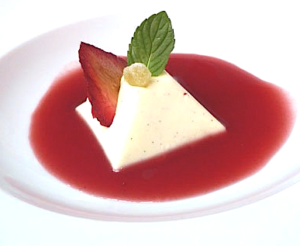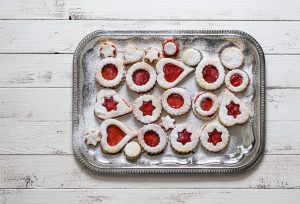 Since its premiere at the 2008 Sundance Film Festival, Bottle Shock has won the hearts of critics and festival audiences alike. Based on a true story, Bottle Shock chronicles the events leading up to the famous “Judgment of Paris” tastings, told through the lives of father and son, Jim and Bo Barett. A former real estate attorney and novice vinter, Jim Barrett (Bill Pulman) sacrificed everything to realize his dream of creating the perfect hand-crafted chardonnay. Meanwhile in Paris, struggling wine seller Steven Spurrier came up with an idea for a publicity stunt to help his floundering shop. Little did Spurrier and Barrett realize they were about to change the history of wine forever.
Since its premiere at the 2008 Sundance Film Festival, Bottle Shock has won the hearts of critics and festival audiences alike. Based on a true story, Bottle Shock chronicles the events leading up to the famous “Judgment of Paris” tastings, told through the lives of father and son, Jim and Bo Barett. A former real estate attorney and novice vinter, Jim Barrett (Bill Pulman) sacrificed everything to realize his dream of creating the perfect hand-crafted chardonnay. Meanwhile in Paris, struggling wine seller Steven Spurrier came up with an idea for a publicity stunt to help his floundering shop. Little did Spurrier and Barrett realize they were about to change the history of wine forever.

Enter Steven Spurrier (Rickman), a British expatriate trolling Napa in
search of bottles for his upcoming wine tasting event arranged to take place
in France, pitting his favorite French wines against up-and-coming vintages from California. His goal: to promote the diversity of offerings in his
failing Paris wine shop. Spurrier is surprised by the quality of the
wines he encounters, among them Barrett’s Chardonnay. But Barrett, put
off by Spurrier’s snobbish attitude, refuses to participate in the
contest. Against his father’s wishes, Bo delivers two bottles of
Chateau Montelena Chardonnay to Spurrier for the contest, just as the
wine salesman is about to board a plane back to Paris.
The move angers the elder Barrett, but he is far more devastated when he discovers that his entire vintage, though exceptional in taste, has mysteriously turned brown. It’s the last straw for Barrett, who decides to have the discolored wine hauled away, quit the business and beg for his old job back. But when Sam looks up a viniculturist who explains that the discoloration is a rare but temporary condition–a result of the Montelena winemaker’s perfectionism–the race is on for Bo and Sam to tell Barrett the good news before the wine gets dumped and Chateau Montelena falls into the hands of its creditors.
Bottle Shock is in theaters now. Check out your local theaters for show times
“Be on the lookout for “Bottle Shock,” a hugely entertaining movie fresh out of Sundance and the film festival circuit. It’s a winner”. Peter Travers, Rolling Stone Magazine
“Bottle Shock is more than the story. It is also about people who love their work, care about it with passion and talk about it with knowledge” Roger Ebert, Chicago Sun-Times
TIME
June 7, 1976
Americans abroad have been boasting for years about California wines, only to be greeted in most cases by polite disbelief – or worse. Among the few fervent and respected admirers of le vin de Californie in France is a transplanted Englishman, Steven Spurrier, 34, who owns the Cave de la Madeleine wine shop, one of the best in Paris, and the Academie du Vin, a wine school whose six-week courses are attended by the French Restaurant Association’s chefs and sommeliers. Last week in Paris, at a formal wine tasting organized by Spurrier, the unthinkable happened: California defeated all Gaul.
The contest was as strictly controlled as the production of a Chateau Lafite. The nine French judges, drawn from an oenophile’s Who’s Who, included such high priests as Pierre Tari, secretary-general of the Association des Grands Crus Classes, and Raymond Oliver, owner of Le Grand Vefour restaurant and doyen of French culinary writers. The wines tasted were transatlantic cousins – four white Burgundies against six California Pinot Chardonnays and four Grands Crus Chateaux reds from Bordeaux against six California Cabernet Sauvignons.
Gallic Gems. As they swirled, sniffed, sipped and spat, some judges were instantly able to separate an imported upstart from an aristocrat. More often, the panel was confused. “Ah, back to France!” exclaimed Oliver after sipping a 1972 Chardonnay from the Napa Valley. “That is definitely California. It has no nose,” said another judge – after downing a Batard Montrachet ’73. Other comments included such Gallic gems as “this is nervous and agreeable,” “a good nose, but not too much in the mouth,” and “this soars out of the ordinary.”
When the ballots were cast, the top-soaring red was Stag’s Leap Wine Cellars’ ’72 from the Napa Valley, followed by Mouton-Rothschild ’70, Haut-Brion ’70 and Montrose ’70. The four winning whites were, in order, Chateau Montelena ’73 from Napa, French Meursault-Charmes ’73 and two other Californians, Chalone ’74 from Monterey County and Napa’s Spring Mountain ’73. The U.S. winners are little known to wine lovers, since they are in short supply even in California and rather expensive ($6 plus). Jim Barrett, Montelena’s general manager and part owner, said: “Not bad for kids from the sticks”



